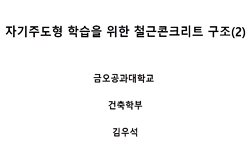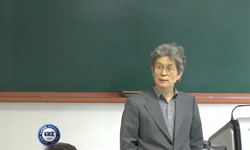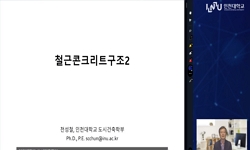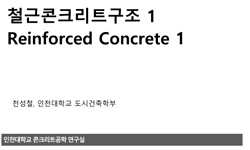콘크리트 구조물의 안전성 검토에서 콘크리트 압축강도 측정은 매우 중요한 요소이다. 콘크리트 압축강도 측정법에는 파괴방법과 비파괴방법이 있다. 파괴방법은 일축압축파괴방법이 있으...
http://chineseinput.net/에서 pinyin(병음)방식으로 중국어를 변환할 수 있습니다.
변환된 중국어를 복사하여 사용하시면 됩니다.
- 中文 을 입력하시려면 zhongwen을 입력하시고 space를누르시면됩니다.
- 北京 을 입력하시려면 beijing을 입력하시고 space를 누르시면 됩니다.

콘크리트 압축강도 측정법과 공시체 내 철근이 압축강도 측정에 미치는 실험적 연구 = An Experimental Study on the Compressive Strength of Reinforcing Bars in Concrete Specimens and Compressive Strength Measurement Methods
한글로보기https://www.riss.kr/link?id=A108013780
- 저자
- 발행기관
- 학술지명
- 권호사항
-
발행연도
2021
-
작성언어
-
- 주제어
-
등재정보
KCI등재
-
자료형태
학술저널
-
수록면
33-40(8쪽)
-
KCI 피인용횟수
0
- 제공처
-
0
상세조회 -
0
다운로드
부가정보
국문 초록 (Abstract)
콘크리트 구조물의 안전성 검토에서 콘크리트 압축강도 측정은 매우 중요한 요소이다. 콘크리트 압축강도 측정법에는 파괴방법과 비파괴방법이 있다. 파괴방법은 일축압축파괴방법이 있으며, 비파괴방법에는 반발경도법과 탄성파 측정법이 있다. 본 연구에는 측정법의 종류와 콘크리트 내부의 철근영향에 따른 콘크리트의의 압축강도 영향을 분석하였다. 공시체의 종류와 상관없이 3가지 실험 방법 중 탄성파 측정법에 의한 평균 압축강도가 다른 방법에 의한 평균 압축강도보다 크게 나타났다. 공시체 종류가 같을 경우 탄성파 측정법이 다른 측정법들에 비해 측정값들의 표준편차가 작게 나타났으므로 탄성파 측정법이 다른 두 측정법에 비해 측정값의 변동이 크지 않음을 알 수 있다. 각 공시체별 실험 방법에 따른 평균압축강도를 압축파괴 실험법의 평균압축 강도를 기준으로 비교하면 탄성파 측정법, 압축파괴실험, 반발경도법 순으로 평균압축강도가 높게 측정되었다. 콘크리트의 압축강도 측정방법과 콘크리트 내부 철근 유무에 따라 콘크리트 압축강도 측정값이 상이하므로 추후 피복두께의 영향 등을 고려한 연구가 필요할 것이다
다국어 초록 (Multilingual Abstract)
Measuring the compressive strength of concrete is a very important factor in the safety review of concrete structures. Concrete compressive strength measurement methods include destructive and non-destructive methods. The destructive method includes t...
Measuring the compressive strength of concrete is a very important factor in the safety review of concrete structures. Concrete compressive strength measurement methods include destructive and non-destructive methods. The destructive method includes the uniaxial compression failure method, and the non-destructive method includes the rebound hardness method and the elastic wave measurement method. In this study, the type of measurement method and the effect of reinforcing bars inside the concrete were tested to examine the relationship between them. Regardless of the type of specimen, the average compressive strength by the elastic wave measurement method among the three experimental methods was greater than the average compressive strength by the other methods. When the specimen type is the same, the standard deviation of the measured values of the elastic wave measurement method is smaller than that of the other measurement methods, so it can be seen that the elastic wave measurement method does not show large variance in the measured values compared to the other two measurement methods. When the average compressive strength according to the test method for each specimen was compared with the average compressive strength of the compressive failure test method, the average compressive strength was measured to be high in the order of the elastic wave measurement method, the compression failure test, and the rebound hardness method. Since the measured values of the compressive strength of concrete are different depending on the method of measuring the compressive strength of concrete and the presence or absence of reinforcing bars inside the concrete, further research is required considering the effect of various concrete covers.
참고문헌 (Reference)
1 박진우, "확률 기반의 신뢰도를 이용한 비파괴 압축강도 추정식 평가" 한국구조물진단유지관리공학회 19 (19): 25-34, 2015
2 홍성욱, "초음파속도법을 이용한 철근콘크리트 수직 및 수평부재의 압축강도 추정" 한국구조물진단유지관리공학회 22 (22): 197-205, 2018
3 홍성욱, "철근 콘크리트 구조 부재의 압축강도 추정 신뢰도 평가" 한국구조물진단유지관리공학회 23 (23): 132-140, 2019
4 W. N. Reynolds, "Ultrasonic wave velocities in concrete" 193-144,
5 R. H. Elvery., "Ultrasonic assessment concrete strength at early age" 81-190, 1976
6 RILEM, "Recommendation NDT 1 ; Testing concrete by the ultrasonic pulse method"
7 Anderson, D. A., "Pulse velocity as a predictor of 28 and 90 day strength" 78 : 116-122, 1981
8 Kim, Y. H., "Nondestructive Testing of Concrete Structure" 20 (20): 329-341, 2000
9 I. Fracaoaru, "Non-destructive testing of concrete in Romania" Architecture and city planning/Building research Institute 1968
10 I. Fracaoaru, "Non-destructive testing of concrete in Romania" 1970
1 박진우, "확률 기반의 신뢰도를 이용한 비파괴 압축강도 추정식 평가" 한국구조물진단유지관리공학회 19 (19): 25-34, 2015
2 홍성욱, "초음파속도법을 이용한 철근콘크리트 수직 및 수평부재의 압축강도 추정" 한국구조물진단유지관리공학회 22 (22): 197-205, 2018
3 홍성욱, "철근 콘크리트 구조 부재의 압축강도 추정 신뢰도 평가" 한국구조물진단유지관리공학회 23 (23): 132-140, 2019
4 W. N. Reynolds, "Ultrasonic wave velocities in concrete" 193-144,
5 R. H. Elvery., "Ultrasonic assessment concrete strength at early age" 81-190, 1976
6 RILEM, "Recommendation NDT 1 ; Testing concrete by the ultrasonic pulse method"
7 Anderson, D. A., "Pulse velocity as a predictor of 28 and 90 day strength" 78 : 116-122, 1981
8 Kim, Y. H., "Nondestructive Testing of Concrete Structure" 20 (20): 329-341, 2000
9 I. Fracaoaru, "Non-destructive testing of concrete in Romania" Architecture and city planning/Building research Institute 1968
10 I. Fracaoaru, "Non-destructive testing of concrete in Romania" 1970
11 R. Jones, "Non-destructive testing of concrete" Cambridge university press 1962
12 Greszczuk, L. B., "Effect of Material Orthotropy on the Directions of Principal Stress and Strains, Orientation Effects in the Mechanical Behavior of Anisotropic Structural Material , ASTM STP 405"
13 Yoon, S. J., "An Experimental Study on the Analysis of Influence Factor of Non-destructive Testing in Concrete Strength by Schumidt Hammer" 7 (7): 429-432, 1995
14 Yeon, G.H., "A Correlation analysis Between the Compressive strength and the Pulse Velocity of Concrete" 1986
동일학술지(권/호) 다른 논문
-
- 한국구조물진단유지관리공학회
- 문주현 ( Ju-hyun Mun )
- 2021
- KCI등재
-
PSC Beam교의 실측실험을 반영한 한계상태설계법 기반 교량 평가법 적용 분석
- 한국구조물진단유지관리공학회
- 김경현 ( Kyunghyun Kim )
- 2021
- KCI등재
-
RC 슬래브교의 신축이음 손상과 바닥판 응답과의 상관관계 분석
- 한국구조물진단유지관리공학회
- 정현진 ( Hyun-jin Jung )
- 2021
- KCI등재
-
- 한국구조물진단유지관리공학회
- 김우석 ( Woo-seok Kim )
- 2021
- KCI등재
분석정보
인용정보 인용지수 설명보기
학술지 이력
| 연월일 | 이력구분 | 이력상세 | 등재구분 |
|---|---|---|---|
| 2027 | 평가예정 | 재인증평가 신청대상 (재인증) | |
| 2021-01-01 | 평가 | 등재학술지 유지 (재인증) |  |
| 2018-01-01 | 평가 | 등재학술지 유지 (등재유지) |  |
| 2015-01-01 | 평가 | 등재학술지 유지 (등재유지) |  |
| 2012-01-26 | 학회명변경 | 영문명 : Journal Of The Korea Institute For Structural Maintenance Inspection -> The Korea Institute For Structural Maintenance and Inspection |  |
| 2012-01-19 | 학술지명변경 | 한글명 : 구조물진단학회지 -> 한국구조물진단유지관리공학회 논문집외국어명 : Journal of The Korea Institute for Structural Maintenance Inspection -> Journal of The Korea Institute for Structural Maintenance and Inspection |  |
| 2011-01-01 | 평가 | 등재학술지 유지 (등재유지) |  |
| 2009-01-01 | 평가 | 등재학술지 유지 (등재유지) |  |
| 2007-08-13 | 학회명변경 | 한글명 : 한국구조물진단학회 -> 한국구조물진단유지관리공학회 |  |
| 2007-04-11 | 학회명변경 | 한글명 : (사)한국구조물진단학회 -> 한국구조물진단학회 |  |
| 2007-01-01 | 평가 | 등재학술지 유지 (등재유지) |  |
| 2004-01-01 | 평가 | 등재학술지 선정 (등재후보2차) |  |
| 2003-01-01 | 평가 | 등재후보 1차 PASS (등재후보1차) |  |
| 2001-07-01 | 평가 | 등재후보학술지 선정 (신규평가) |  |
학술지 인용정보
| 기준연도 | WOS-KCI 통합IF(2년) | KCIF(2년) | KCIF(3년) |
|---|---|---|---|
| 2016 | 0.36 | 0.36 | 0.31 |
| KCIF(4년) | KCIF(5년) | 중심성지수(3년) | 즉시성지수 |
| 0.28 | 0.27 | 0.496 | 0.13 |





 ScienceON
ScienceON KISS
KISS






